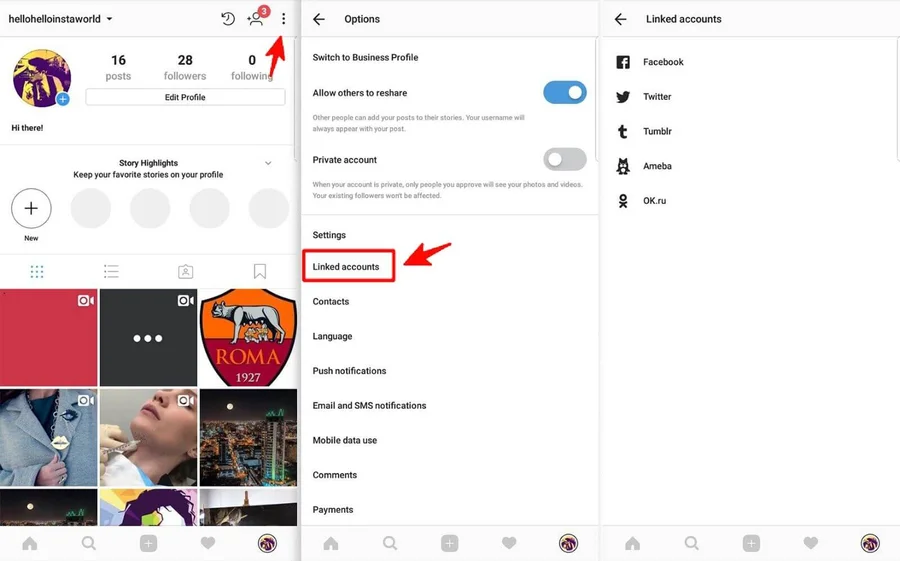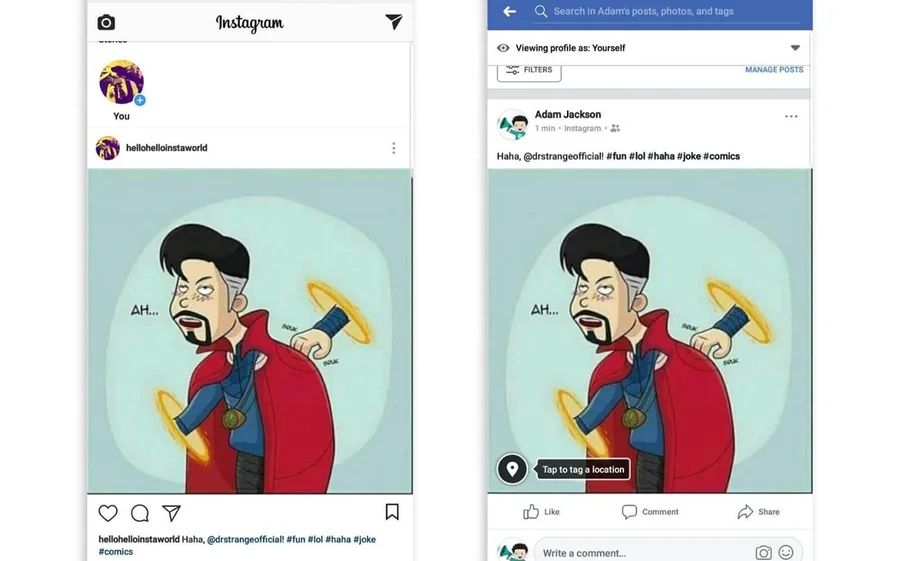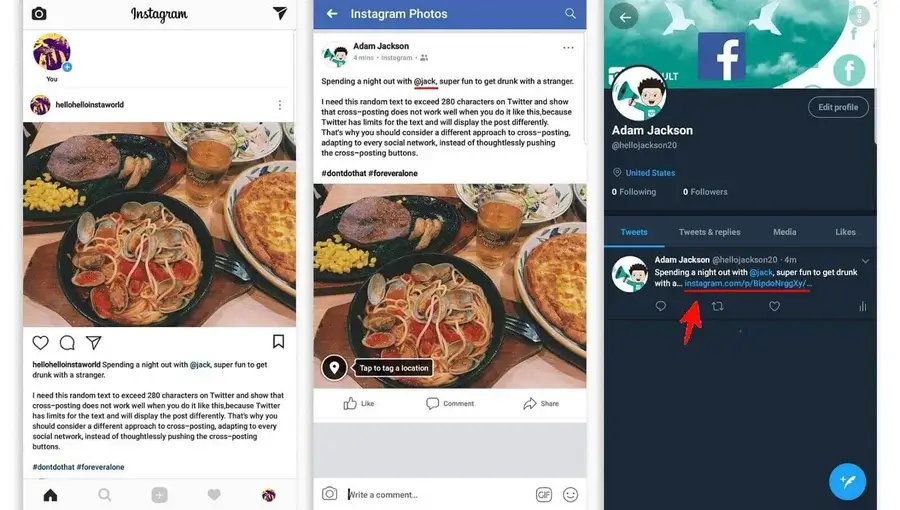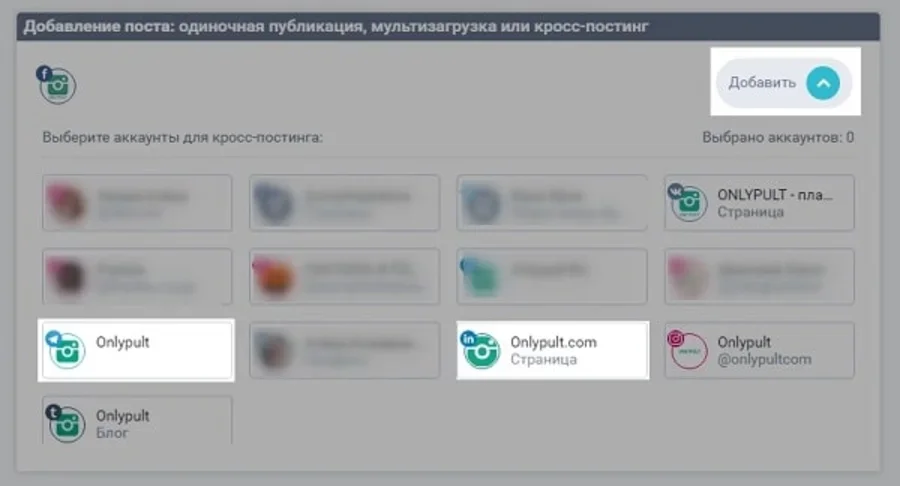Cross-posting is a type of publication when you make the same post on different social networks. Of course, at first sight, it seems very easy to make the same posts: it provides the activity of your other accounts and helps reach a big audience with one click. But there are substantial disadvantages together with clear advantages.
The idea of making one high-quality post and simply add it to all possible networks is very tempting. You save time, and all your accounts are updated. But if you don’t do cross-posting correctly, there is a high chance to look stupid and make your followers angry. We are going to tell you who needs cross-posting, what are its advantages and disadvantages, and how to spread content effectively.
What is cross-posting?
Cross-posting is a type of publication when you publish the same post on different social networks. For example, you have made mini video-instructions for a product, wrote a caption with emojis, and added the video to Instagram, Facebook, VKontakte, and your other social media accounts. The key point is copying the content without making any changes to it. You can do it with the help of different services and built-in features of social networks.

The benefits of cross-posting
Such an approach for running corporate accounts has its advantages:
- It saves you the effort of creating and adjusting your content for a particular social network. You use your time to create one post that is really cool and publish it everywhere. Quite often, it is better than making 3-5 unique but mediocre posts.
- You reach bigger audiences by reminding your followers from all your accounts about yourself. Abandoned corporate accounts make a bad impression.
- You increase engagement and attract new followers.
Posting on all social media platforms at once: Why you may need that?
Posting content on all social media platforms at once is a good idea for those who have corporate accounts but doesn’t have a big team for creating unique content for all networks. For example, if you have only just started your business and are trying to understand what social network to focus on.
Why it is not worth publishing the same post on several social networks
The target of a post is to deliver some information understandably. Every social network has its format, and very often the functionalities of two of them differ at least a bit. For example, hashtags and tags work on Instagram and Twitter but are useless on Facebook. If you see on Facebook a text which contains hashtags or tags, it is someone’s poor cross-post example almost 100%.

Now almost all social media are integrated and allow associating an account of one network with the accounts of the others. For example, you can link your Facebook, Twitter, Tumblr, or a couple of your other pages, depending on the region, to your Instagram profile. In theory, it looks nice: just link all your social network pages and work twice as quickly. But in practice, it will not work so well, to put it milder. If you tag users, it is also not always good. Your text may look sloppy, or you may tag people with the same username. For example, like this:

Besides, every social network has its character limit; we told you about that in our article on how to make posts which your followers can’t ignore – this is why it is so easy to make a mistake sometimes.
Cross-posting: Best Practices: How to cross-post properly
Say no to posting identical content to all the social networks. Instead, focus on publishing different materials on different platforms. Through your content, you send a message to your audience that can be drastically different on Twitter and Facebook.
Here are some tips that will help you to avoid mindless duplication of your posts and to start publishing your content more efficiently.
1. Learn the peculiarities of Each Social Network
- Hashtags are good for Instagram but are rarely used on Facebook.
- Account tagging on Facebook should be done manually by searching the name of the account or a friend’s name. If you copy the tag from Instagram or Twitter, it won’t work, or you will tag the wrong user.
- On Twitter there is a 280-character limit, on Instagram, it is 2200 characters. Facebook doesn’t limit the number of characters in a text — you can type a whole chapter of a book if you please.
- A video longer than one minute will go to the IGTV section, and the followers will only see a small part of the video on their feeds. Facebook allows uploading a video up to 120 minutes, but Twitter only allows 2 minutes and 20 seconds.
- Twitter prohibits cross-posting within the social network, i.e. you can’t copy the same content to different Twitter accounts. Cross-posting from different social networks is allowed.
- On Instagram, you can add several photos to a carousel, on other social networks there is no such feature, and photos may look less attractive. Twitter is the most problematic in this respect, which even inspired some memes:

2. Optimize Content for Each Network
When optimizing your content, you should take the technical peculiarities of the platform, audience profile, and users’ interests into consideration. If your followers on Twitter enjoy reading long texts, you can attach a link to a long read on your blog and add a short description to it. But if your audience appreciates brevity, it is only worth summing up articles within a 280-character limit of the social network.
A useful post of over 2200 characters from Facebook can become a script for an IGTV on Instagram, or you can just select key ideas and show them through infographics.
Not every publication requires in-depth optimization, sometimes you just need to remove or add hashtags, change the image (on Facebook or Twitter rectangular posts look better), or cut videos.
3. Schedule According to Each Network’s Peak Time
Every network has its best time for posting. Your audience may also use some platforms at a different time of the day.
- The best time for posting on Facebook is from Monday to Thursday between 11 am and 3 pm if you are promoting an event, and during off-duty hours (between 6 and 8 pm) if you are selling a product.
- On Instagram, it is better to make posts between 2 pm and 3 pm.
- Twitter will increase your reach if you post between 8 am and 4 pm.
You can find more information about the best time for posting on other platforms and post scheduling in our article.
Cross-posting with Onlypult
Onlypult services will make cross-posting to all social networks easier, and also will allow you to optimize the content for the requirements and peculiarities of a particular platform.
On Onlypult you can also add posts to several accounts of the same social network.
These are the steps you should take:
- Choose the main account for making a post.
- Add other accounts for cross-posting.
- Adjust photos and videos, add text.
- Schedule post for a particular time.

Another method:
- Go to your feed Drafts of the required account and press the Add button.
- Choose an account where you want to copy the post to.
- Make adjustments to the post and schedule it.







